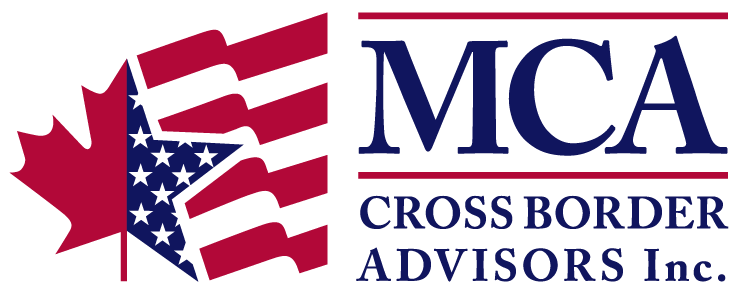Making the decision to move to the U.S. always invokes planning questions for many Canadians. Taxes, ties with Canada, legal aspects or even investments are important matters when crossing the border, and Registered Retirement Savings Plans (RRSP) are no exception to this rule. In this blog, we will describe some of the main advantages of the tax treatment of an RRSP for Canadians who have moved to the U.S.
First, let’s review the importance of contributing to an RRSP. As Canadians, there are two main advantages of contributing. Investors will achieve immediate tax benefits in the year of contribution. The total amount of their annual contribution can be deducted from their gross income at tax time, reducing the amount of tax they pay that year. Also, the income earned in their RRSP is not taxed until it is withdrawn. At current tax rates, this would mean owing tax to the Canada Revenue Agency at marginal rates as high 53.3% on RRSP withdrawals.
Now, let’s get into more detail about the options available to Canadians who have moved to the U.S. Rather than pay 53.3%, the CRA will allow non-residents of Canada to withdraw funds in a lump sum from their plans at a reduced withholding tax of 25%. With appropriate planning this 25% withholding tax may be reduced to as little as 15%.
Every year, investors can contribute a certain amount to their RRSP based on the income they made during the previous year. The maximum contribution amount for 2016 is the lower of $25,370 or 18% of the investor’s earned income from the previous year. Earned income includes salary or wages, alimony received and rental income but does not include items such as investment income. Also, to be eligible for an RRSP deduction in a specific taxation year, investors can make contributions any time during the year, or up to the first 60 days in the following year. For the 2016 tax year, March 1, 2017 is the deadline.
For non-residents, Canadian income tax paid on a withdrawal will generate foreign tax credits (FTCs) in the U.S. and may lead to important tax saving opportunities. Indeed, as for taxation of RRSP withdrawals on the U.S. side, federal income tax will generally be imposed in the same year as Canadian tax is imposed but usually with no net U.S. tax owing because of the offset created by FTCs on taxes paid in Canada.
Also, investors are allowed to carry forward their unused RRSP contribution room every year. Depending on the investor’s annual income and tax rate, it could be advantageous to contribute a large amount to their RRSP before exiting Canada.
In conclusion, the Canada Revenue Agency allows non-residents to withdraw the funds from their RRSP at a reduced withholding tax rate. With the help of a complete cross-border financial plan, taxpayers can learn how to take advantage of important tax savings.
[su_button size=”6″ url=”https://mcacrossborder.com//consultation/” background=”#10155e”]Request a Consultation[/su_button]
——–
MCA Cross Border Advisors, Inc. is a registered investment adviser. Information presented is for educational purposes only and does not intend to make an offer or solicitation for the sale or purchase of any specific securities, investments, or investment strategies. Investments involve risk and, unless otherwise stated, are not guaranteed. Be sure to first consult with a qualified financial adviser and/or tax professional before implementing any strategy discussed herein. Past performance is not indicative of future performance.

